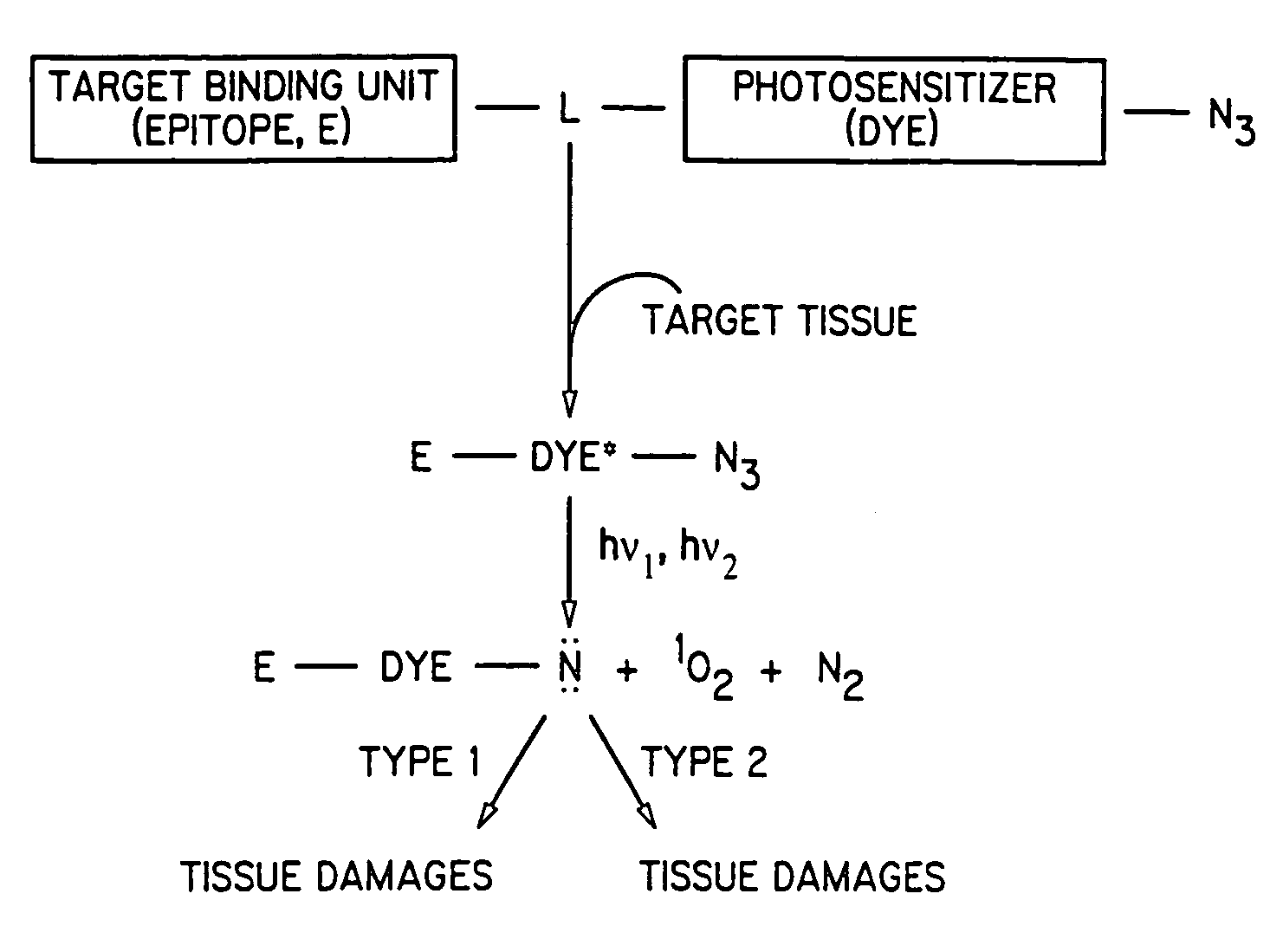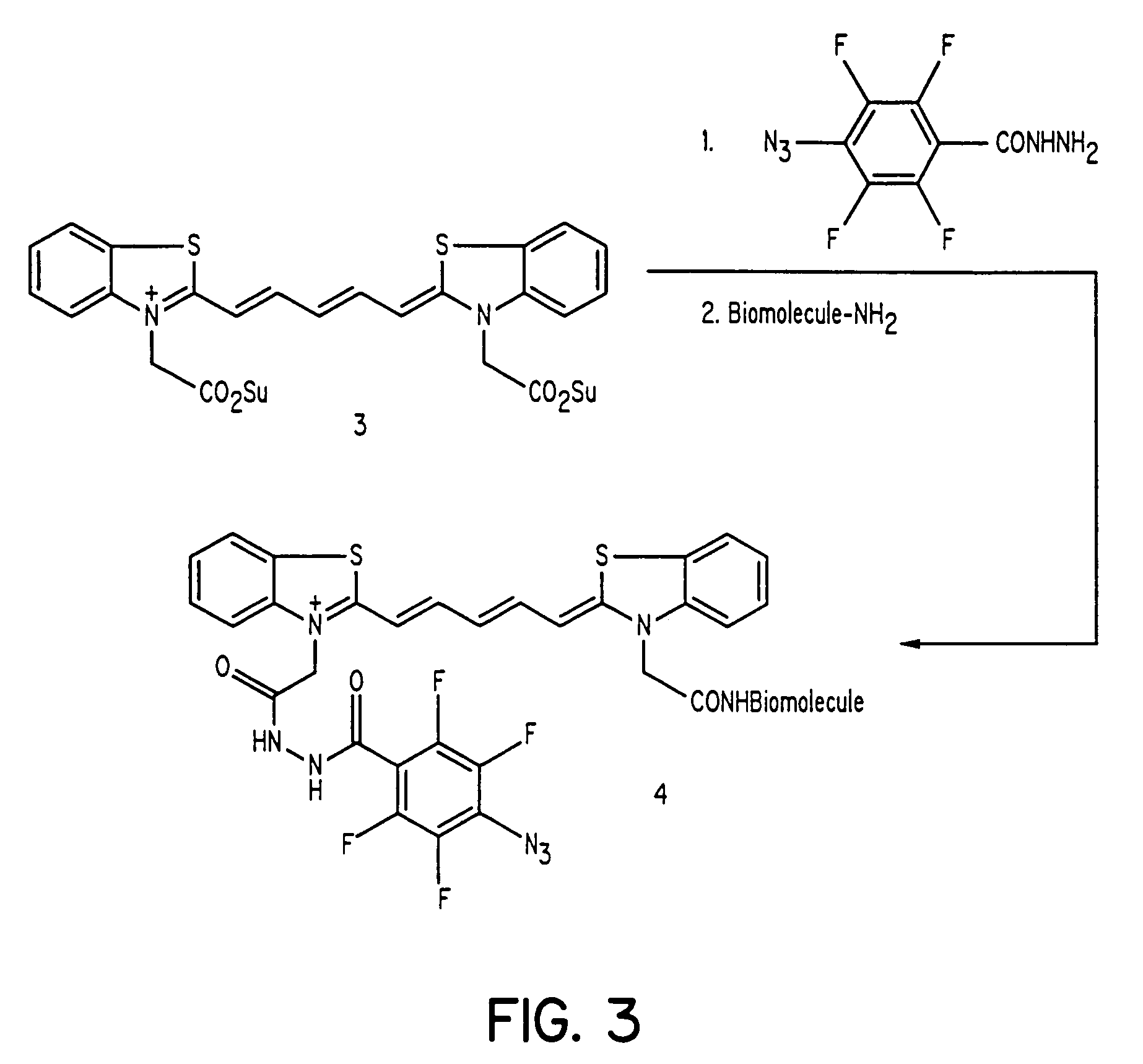Methods and compositions for dual phototherapy
a composition and phototherapy technology, applied in the field of new products, can solve the problems of prolonged cutaneous photosensitivity, chemical heterogeneity, cell death, and aggregation
- Summary
- Abstract
- Description
- Claims
- Application Information
AI Technical Summary
Problems solved by technology
Method used
Image
Examples
Embodiment Construction
[0020]The present invention discloses dye-azide derivatives and their bioconjugates for phototherapy of tumors and other lesions. The compounds have the general formula,
E-L-DYE-X—N3
wherein DYE is an aromatic or a heteroaromatic radical derived from the group consisting of cyanines, indocyanines, phthalocyanines, rhodamines, phenoxazines, phenothiazines, phenoselenazines, fluoresceins, porphyrins, benzoporphyrins, squaraines, corrins, croconiums, azo dyes, methine dyes, indolenium dyes, and the like; E is either a hydrogen atom or is selected from the group comprising antibodies, peptides, peptidomimetics, carbohydrates, glycomimetics, drugs, hormones, or nucleic acids; L is a linker unit selected from the group comprising —(CH2)a—, —(CH2)bCONR1—, —N(R2)CO(CH2)c—, —OCO(CH2)d—, —(CH2)eCO2—, —OCONH—, —OCO2—, —HNCONH—, —HNCSNH—, —HNNHCO—, —OSO2—, —NR3(CH2)eCONR4—, —CONR5(CH2)fNR6CO—, and —NR7CO(CH2)gCONR8—; X is either a single bond or is selected from the group consisting of —(CH2)h—, ...
PUM
| Property | Measurement | Unit |
|---|---|---|
| wavelength | aaaaa | aaaaa |
| wavelength | aaaaa | aaaaa |
| wavelength | aaaaa | aaaaa |
Abstract
Description
Claims
Application Information
 Login to View More
Login to View More - R&D
- Intellectual Property
- Life Sciences
- Materials
- Tech Scout
- Unparalleled Data Quality
- Higher Quality Content
- 60% Fewer Hallucinations
Browse by: Latest US Patents, China's latest patents, Technical Efficacy Thesaurus, Application Domain, Technology Topic, Popular Technical Reports.
© 2025 PatSnap. All rights reserved.Legal|Privacy policy|Modern Slavery Act Transparency Statement|Sitemap|About US| Contact US: help@patsnap.com



